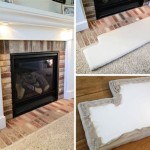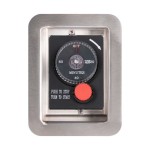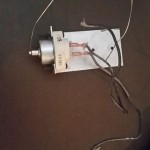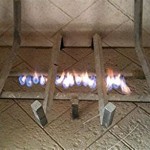Understanding Fireplace Doors: Functionality, Aesthetics, and Safety
Fireplace doors are an essential component for any wood-burning fireplace. They serve multiple purposes, ranging from enhancing safety and improving energy efficiency to adding an aesthetic element to the fireplace and the surrounding room. Understanding the different types of fireplace doors, their benefits, and the factors to consider when selecting one is crucial for any homeowner looking to maximize the potential of their fireplace.
A fireplace without doors allows air to freely flow up the chimney, even when a fire is not burning. This can lead to significant heat loss during colder months and drafts that make the room uncomfortable. Fireplace doors, on the other hand, create a barrier that minimizes this airflow, helping to maintain a consistent temperature within the home. Furthermore, they prevent sparks and embers from escaping the firebox, reducing the risk of accidental fires and protecting nearby furniture and flooring. Beyond the functional aspect, fireplace doors are available in a wide variety of styles and finishes, allowing homeowners to customize their fireplace to match their personal taste and the overall décor of the room.
Improved Energy Efficiency and Heat Retention
One of the primary benefits of installing fireplace doors is the improvement in energy efficiency. Open fireplaces are notoriously inefficient, often drawing warm air from the room and sending it up the chimney. This negative pressure can force the furnace or heating system to work harder to maintain a comfortable temperature, resulting in higher energy bills. Fireplace doors, specifically those with airtight seals, significantly reduce this heat loss by preventing the free flow of air. When the fireplace is not in use, closed doors act as a barrier, keeping warm air inside the home. When a fire is burning, the doors can be partially or fully closed to control the airflow and combustion rate, maximizing the heat output while minimizing fuel consumption.
Furthermore, some fireplace doors are equipped with heat-resistant glass that radiates heat back into the room. This radiant heat is more efficient at warming the space than the convective heat of an open fire, which tends to rise quickly and escape up the chimney. By containing and redirecting the heat, fireplace doors can contribute to a more comfortable and energy-efficient home. Investing in well-insulated fireplace doors, especially those with a tight seal and efficient glass, can lead to significant long-term savings on heating costs.
The selection of glass is a crucial factor when focusing on energy efficiency. Tempered glass is the standard choice, offering good heat resistance and durability. However, for optimal efficiency, ceramic glass is often preferred. Ceramic glass can withstand even higher temperatures and offers superior heat transfer properties, further enhancing the radiant heat output of the fireplace.
Enhanced Safety and Protection
Safety is another paramount consideration when evaluating the need for fireplace doors. Open fireplaces pose a significant fire hazard, as sparks and embers can easily escape the firebox and ignite nearby flammable materials. Fireplace doors provide a physical barrier that contains these sparks and embers, significantly reducing the risk of accidental fires. This is especially important in homes with children or pets, who may be more likely to come into contact with an open fire.
In addition to preventing the escape of sparks and embers, fireplace doors also protect against the risk of burns. The glass surface of the doors remains hot while the fire is burning, but it provides a clear visual barrier, preventing accidental contact with the flames. This is particularly important for young children, who may not fully understand the dangers of fire. Furthermore, some fireplace doors are equipped with mesh screens that provide an additional layer of protection, preventing objects from falling into the firebox.
The use of fireplace doors also helps to prevent drafts from blowing smoke and ash into the room. An open fireplace can be susceptible to downdrafts, which occur when cold air enters the chimney and pushes smoke back into the living space. Fireplace doors can help to minimize these downdrafts by creating a more stable airflow and preventing cold air from entering the chimney. This can improve the air quality within the home and reduce the risk of respiratory problems.
Aesthetic Enhancement and Customization
Beyond the functional benefits of energy efficiency and safety, fireplace doors offer a valuable opportunity to enhance the aesthetic appeal of the fireplace and the surrounding room. Fireplace doors are available in a wide variety of styles, finishes, and materials, allowing homeowners to customize their fireplace to match their personal taste and the overall décor of the home. From traditional wrought iron designs to sleek and modern stainless steel frames, there is a fireplace door to suit every style and preference.
The choice of finish is an important consideration when selecting fireplace doors. Black is a popular choice, as it complements a wide range of décor styles and provides a classic, timeless look. However, other finishes, such as brass, bronze, and nickel, can add a touch of elegance and sophistication to the fireplace. The finish should be chosen to complement the existing hardware and fixtures in the room, creating a cohesive and stylish look.
Furthermore, the type of glass used in the fireplace doors can also contribute to the overall aesthetic. Clear glass provides an unobstructed view of the fire, while tinted or textured glass can add a unique and decorative element. Some fireplace doors even feature decorative patterns or designs etched into the glass, further enhancing their visual appeal. The choice of glass should be carefully considered to achieve the desired aesthetic effect and complement the overall style of the fireplace and the room.
When selecting fireplace doors, it's important to consider the size and shape of the fireplace opening. Fireplace doors are typically custom-made to fit the specific dimensions of the fireplace, ensuring a proper fit and optimal performance. Measuring the fireplace opening accurately is crucial to avoid any gaps or air leaks. Homeowners can choose between overlapping doors, which cover the entire fireplace opening, or inside-fit doors, which are installed within the firebox. The choice depends on the aesthetic preference and the specific design of the fireplace.
The material used to construct the frame of the fireplace doors is another important consideration. Steel and aluminum are common choices, offering durability and resistance to heat. However, wrought iron doors offer a more traditional and ornate look, adding a touch of elegance to the fireplace. The material should be chosen based on the desired aesthetic and the overall style of the home.
In addition to the basic design elements, fireplace doors can be further customized with a variety of accessories and features. These include mesh screens, decorative handles, and adjustable air vents. Mesh screens provide an extra layer of protection against sparks and embers, while decorative handles add a touch of elegance and sophistication. Adjustable air vents allow for precise control over the airflow and combustion rate, maximizing heat output and fuel efficiency.
Ultimately, the selection of fireplace doors is a personal decision that should be based on a variety of factors, including energy efficiency, safety, aesthetic appeal, and budget. By carefully considering these factors and choosing the right fireplace doors, homeowners can enhance the functionality, safety, and beauty of their fireplace, creating a warm and inviting focal point in their home.
Proper installation of fireplace doors is crucial to ensure optimal performance and safety. While some homeowners may choose to install the doors themselves, it is generally recommended to hire a qualified professional. A professional installer will have the expertise and tools necessary to ensure that the doors are properly fitted and sealed, preventing any air leaks or safety hazards. Furthermore, a professional installation will typically come with a warranty, providing peace of mind in case of any problems or issues.
Regular maintenance is also essential to keep fireplace doors in good condition and ensure optimal performance. The glass should be cleaned regularly with a specialized fireplace glass cleaner to remove soot and grime. The hinges and latches should be lubricated periodically to ensure smooth operation. And the seals should be inspected for any cracks or damage and replaced as needed. By following these simple maintenance tips, homeowners can extend the life of their fireplace doors and keep them functioning properly for many years to come.

Standard Size Masonry Fireplace Doors Fixed Frame

Glass Fireplace Doors

Fireplace Glass Doors Vs Screens Full Service Chimney

Fireplace Doors Door Outdoor Fire Experts

Why Should I Get A Glass Fireplace Door Installed On My

What To Consider When Choosing Your Fireplace Door

Fireplace Door Guide Stoll Industries

Pleasant Hearth Alsip Large Glass Fireplace Doors Ap 1132 The Home Depot

Wood Burning Fireplace Doors And Screens Ironhaus

Paterson Sliding Fireplace Door In Black Doors Glass Barn








